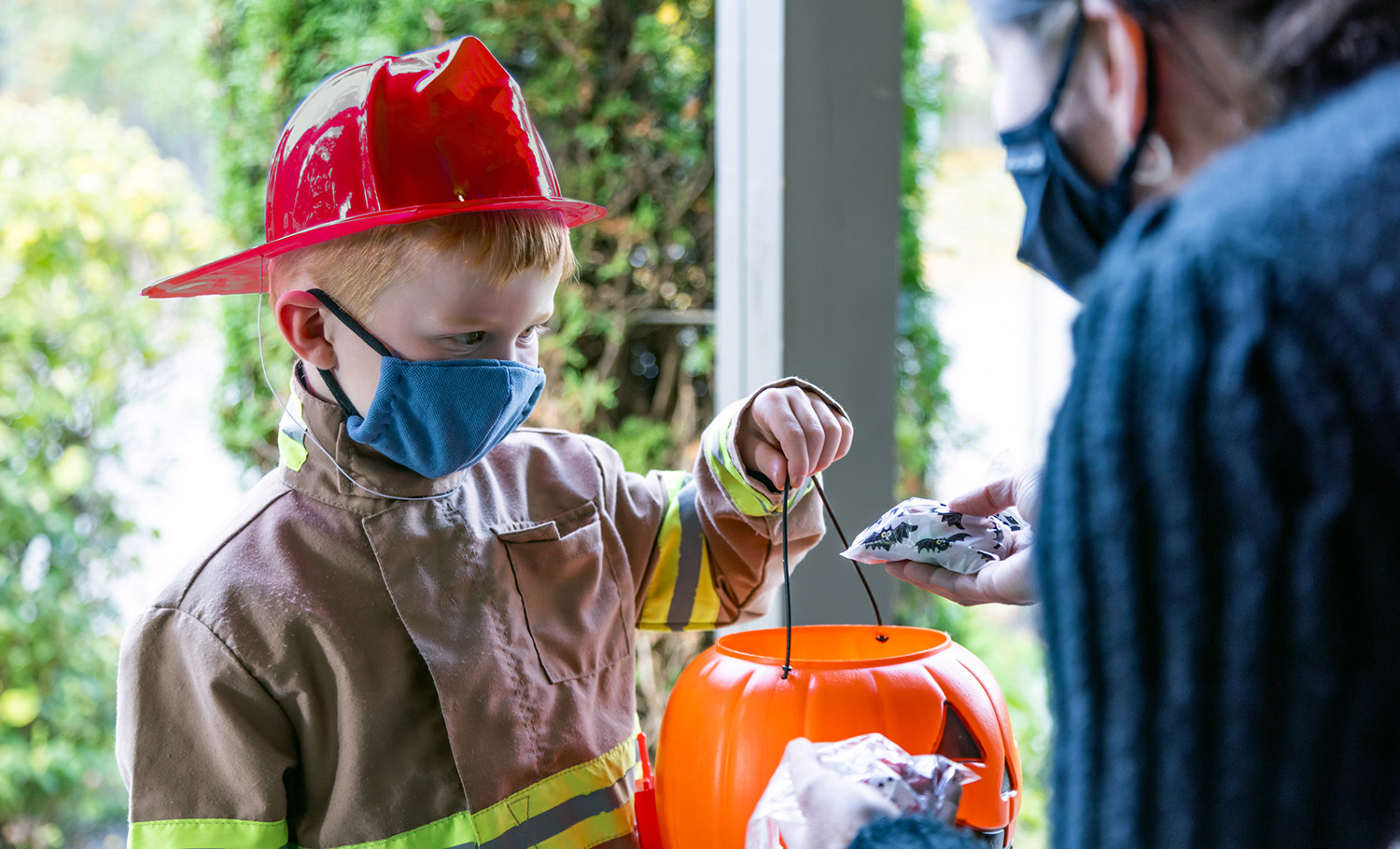One of my favorite memories of growing up in Kingsport is celebrating Halloween. I loved dressing up and walking through the neighborhood with my family and friends to see all the houses transformed with decorations and spooky music.
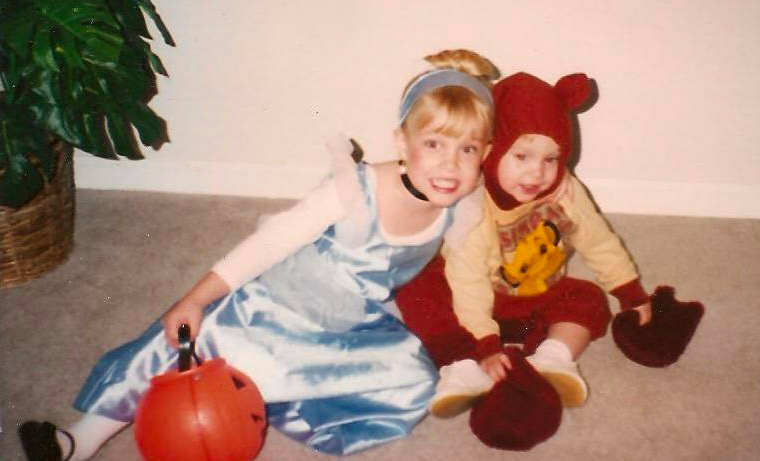
This year my husband, Jeremiah, and I get to decorate our new home in Piney Flats. We are so excited to decorate because it’s our first Halloween since moving back to the area. We usually dress up our dogs, Lucy and Lola, and we love watching the trick-or-treaters go by. Like many of you, we’re thinking of ways to celebrate safely—to help give children a holiday to remember while keeping them and their families safe.
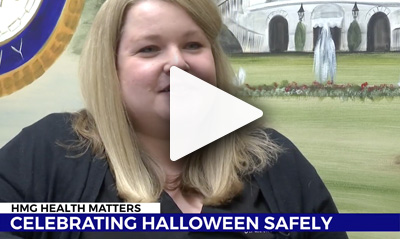 WJHL VIDEO: Dr. Stout discusses Halloween
WJHL VIDEO: Dr. Stout discusses Halloween
activities and COVID-19
As a pediatrician, I love talking with kids about the costumes they’ve picked out and seeing how their interests change over the years. This year, I’m getting lots of questions from parents about Halloween. “Should we let our kids trick-or-treat this year?” is definitely top of mind.
The answer depends on the level of risk parents are willing to take and the precautions we put in place as a community to make this a safe Halloween—even during a pandemic.
It’s OK to Celebrate Halloween—With a Modified Approach
Halloween during a pandemic may look very different this year, but that doesn’t mean it can’t be fun for your kids. There are lots of ways parents and neighbors can create lasting memories for children while keeping everyone safe from the coronavirus.
1: Create a socially distanced trick-or-treat experience
Many parents are planning on taking their children trick-or-treating this year to celebrate Halloween. However, the traditional approach to trick-or-treating, with crowds of children and their families winding their way through neighborhoods, is considered a high-risk activity this year according to the Centers for Disease Control & Prevention.
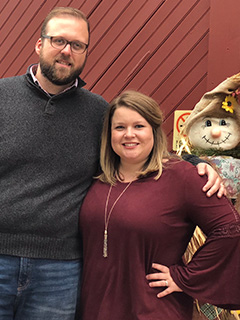 Dr. Stout and her husband Jeremiah
Dr. Stout and her husband JeremiahEven though the interactions at your neighbor’s door are brief, there is still a risk of spreading COVID-19. The more households that you visit, the more likely the chance of exposure. The risk also is increased when you go trick-or-treating with large groups for an extended period of time —especially in tight quarters where kids can’t keep their masks on.
To protect your kids and communities from COVID-19, consider the following modifications to this year’s trick-or-treat experience:
- Limit the size of your group. Instead of walking around with a big group of neighbors and friends, stick with family members and people you see regularly. Keep your group as small as possible.
- Use hand sanitizer frequently. There’s no need for your children to wear gloves, but giving your child a few drops of sanitizer to rub into their hands from time to time will help kill bacteria and viruses as they walk through the neighborhood. They should use this before and after going to each house to get candy. Once children get home, have them wash their hands.
- Pass out candy from a table in your driveway. Instead of having trick-or-treaters come to your door, put the candy or treats on a card table set up in your driveway. Let the kids handle their own candy rather than putting the candy in their buckets. Even safer: Create grab-and-go bags for the kids rather than putting the candy in a communal candy bowl.
- Put a bottle of hand sanitizer out in addition to the treats. This helps everyone stay safe throughout the night.
- Wear a mask—but don’t put a mask underneath a costume mask. All adults and children should wear a face covering of some type to prevent the spread of germs. However, kids who are wearing a paper or plastic mask as part of their costume shouldn’t wear a cloth mask underneath, as this could restrict their access to air. A better idea: Choose a costume that can incorporate a cloth mask.
- Consider a “reverse trick-or treat.” This is where adults drive by in decorated cars and toss candy to children as they stand on their front lawns. This type of experience requires lots of neighborhood collaboration, but it’s one of the safer forms of trick-or-treating this year
- Remember the basics. A safety-first approach also should involve flashlights, glow sticks, and reflective tape to increase visibility.
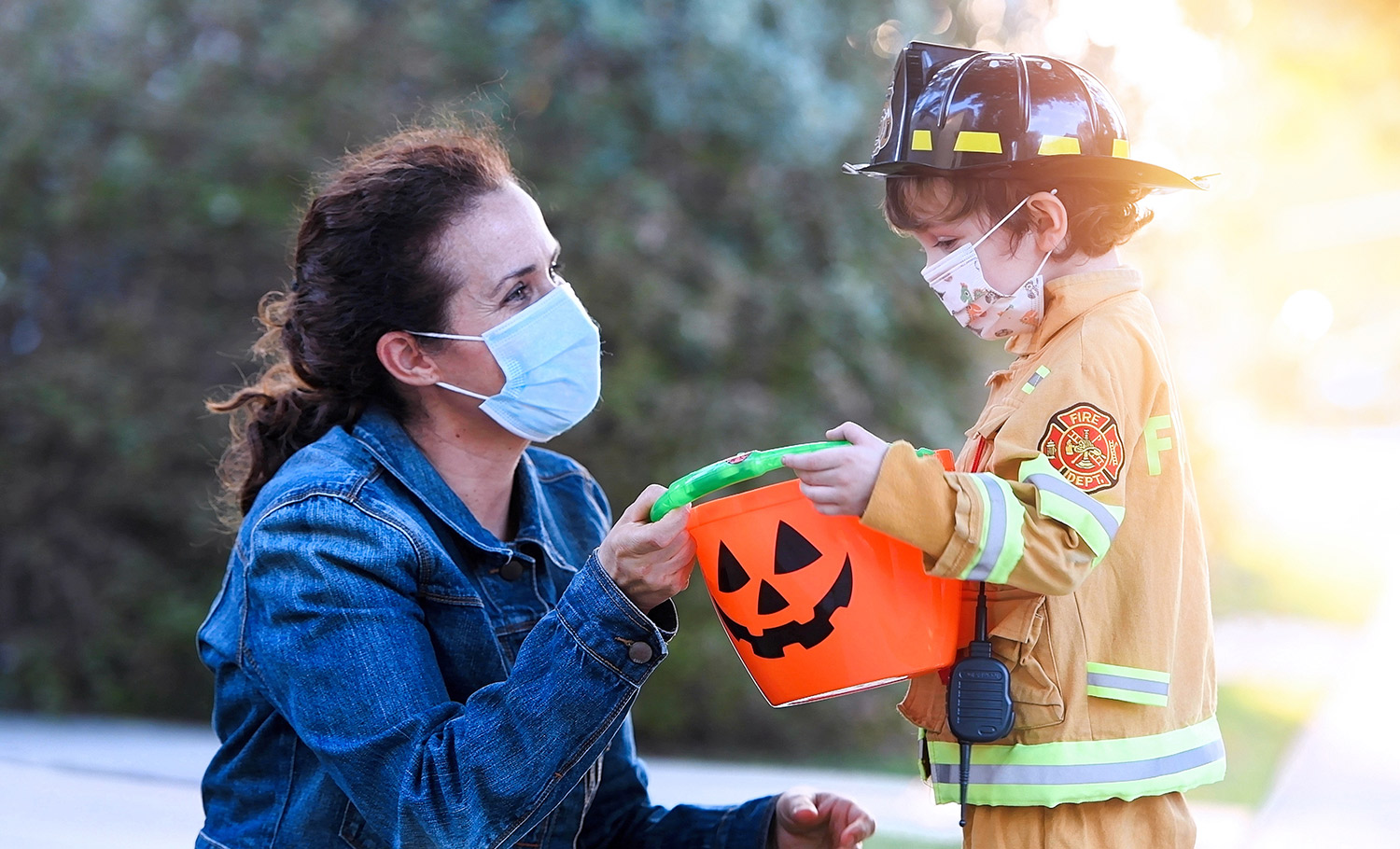
I’ve also seen examples of do-it-yourself candy chutes—and I think they look like a lot of fun. Be creative!
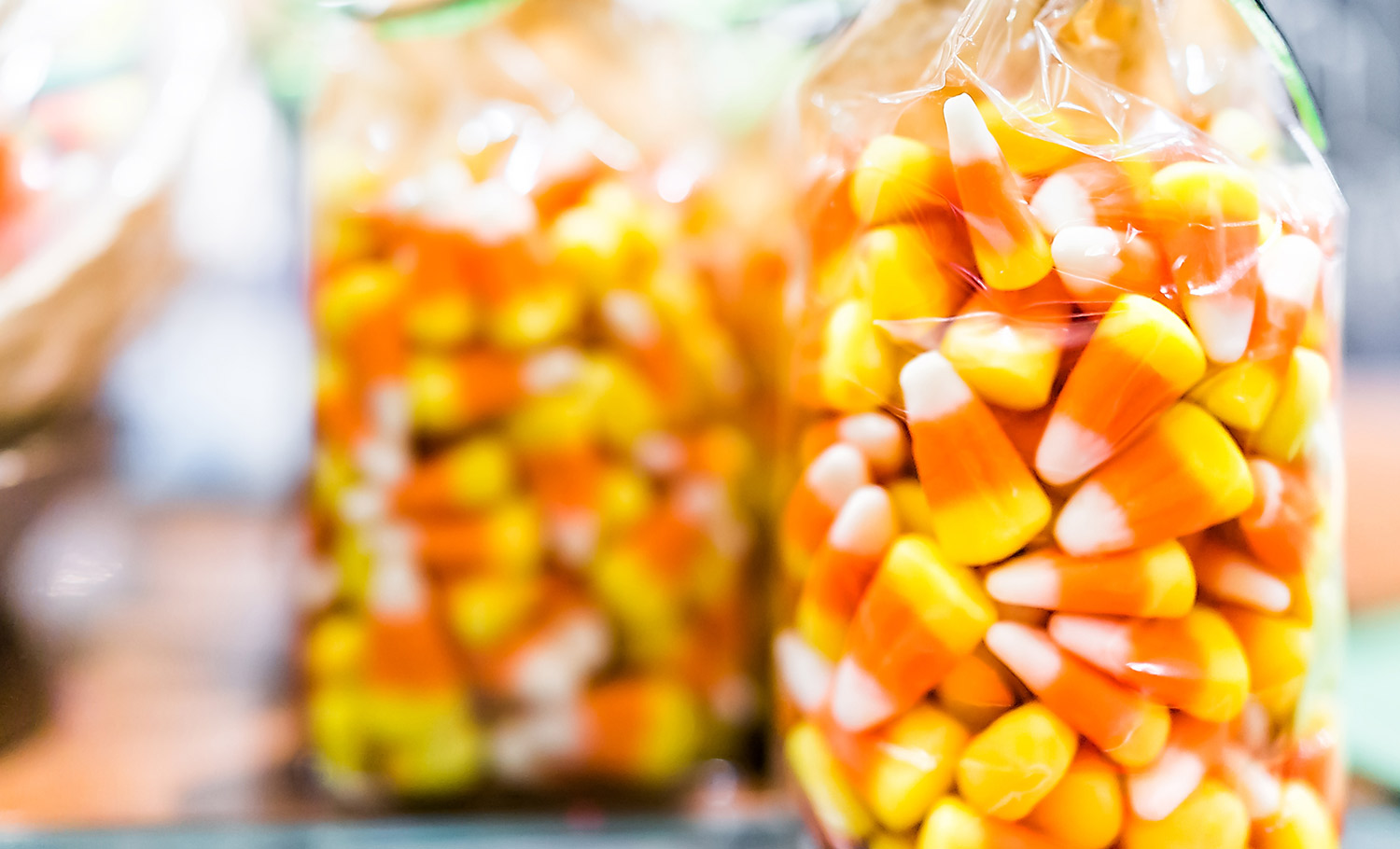
2: What to Do with All that Candy
The coronavirus doesn’t survive long on surfaces, so it’s not necessary to sanitize candy the before the kids can enjoy it. That news often comes as a relief to parents, especially after many families spent last spring wiping down groceries to protect themselves from the virus. (Turns out that wasn’t necessary, but that’s something we’ve come to know over time, as our understanding of the virus increases.)
One thing to keep in mind when you’re buying this year’s Halloween stash: Make sure treats are individually wrapped. That’s important whether you’re selecting candy for trick-or-treaters or having a small gathering for the holiday.
3: Virtual Celebrations Can Be Just as Fun
Halloween doesn’t have to include trick-or-treating to be fun for kids. As parents, you set the tone for the holiday. If you’d prefer to help your child celebrate from home, consider hosting a virtual costume contest. Sites like Facebook provides lots of opportunities to connect with close friends and family and let the kids show off their costumes. You could also create a group chat to share photos of the kids in their spooky attire.
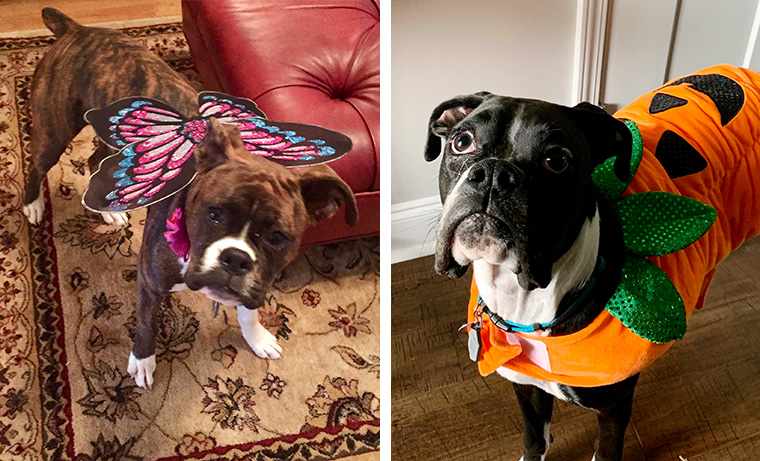
4: Getting Together with Friends? Rethink the Potluck
If you’re hosting an event with a small group or attending one, look for ways to reduce the number of items that children and adults touch. For example, the CDC recommends that rather than serving a potluck dinner, each family should bring food for their own group. If you are serving food, limit the number of people who frequent the food area, such as in the kitchen or around the grill. Use grab-and-go options, if possible. If you’re serving food to guests, wash your hands frequently.
It’s Up to You
Ultimately, how families celebrate Halloween—and how their neighbors celebrate, too—is a highly individual choice, and it depends largely on a person’s comfort level.
For example, as a parent, are you comfortable with your children going door to door to stranger’s homes during a pandemic? If you’re not, a night in with family, watching a Halloween movie and munching on candy from your home, could be the best option.
Are you uncomfortable passing out candy from your driveway or a paper chute? Perhaps a bowl left outside for children to select a treat is best—if you choose to pass out candy at all. (It’s okay not to!)
By weighing the risks and the benefits carefully, parents can make the right decisions about Halloween for their families and still create an experience their children will remember.
Questions? Contact our office anytime!



